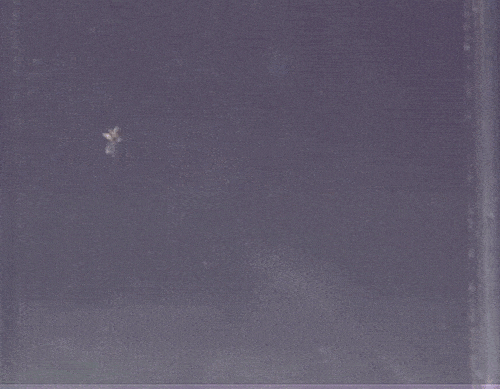Insect-Zapping Laser “Fence” Prepares for First Enemy Contact

Florida’s citrus farmers are at war. An insect invader called the Asian citrus psyllid has driven orange production to under half 2005 levels by spreading a disease that prevents fruit ripening. Growers spray pesticides and pull out sickened trees, but it doesn’t appear to be a winning battle. “We’re starting to question if we can actually control them,” says John Barben, a farmer in Highlands County.
Intellectual Ventures, cofounded by former Microsoft chief technology officer Nathan Myhrvold, believes that bleak outlook makes Florida’s entomological battlefield the perfect testing ground for an unusual and unproven approach to insect control. This summer the company plans to install a device that uses cameras and a laser beam to identify and shoot down psyllids on a U.S. Department of Agriculture site in the state.
It will be the first real-world test of a device originally dreamed up as a way to control mosquitos that carry malaria in poor regions of the world—but that has been forced on a commercial diversion.
“We have not given up on that goal,” says Jeremy Salesin, who leads commercialization efforts for the technology. “But to get to the price points we need for those scenarios you need a large number of units, and a device that’s not the first-generation product.”
Intellectual Ventures is now on its third prototype of what it calls the Photonic Fence. Its kill zone extends 30 meters horizontally and 3 meters vertically. In the the device has notched up kills against mosquitos, Asian citrus psyllids, and fruit flies.
Death by laser beam sounds messy. But Arty Makagon, technical lead on the project, says the device’s eye-safe, invisible, infrared laser makes clean kills, having been calibrated to deliver just enough heat to kill insects without wasting power. “When you look under microscope you can’t tell where it’s been shot,” he says of bugs downed by the device. “There are no singe marks, there is no gaping wound.”

This summer in Florida, the Photonic Fence will initially be tested against psyllids released inside a screen house, an enclosure of fine mesh used to protect trees from pests. After that, and tests to prove it can avoid targeting bees, the device will be used to replace one wall of a screen house and get its first shot at wild psyllids. Makagon wants to then use several devices to make a perimeter around a block of citrus trees.
Intellectual Ventures has also submitted a proposal to test its device in California, where psyllids are less established but advancing. Next year, the company hopes to have a version with a longer, 100-meter range, in testing with citrus growers. Makagon says that Pepsi and Coca Cola—which have lines of citrus juices and sodas and work closely with orchards around the world—have both expressed interest in the project.
Barben, in Highlands County, says he’s intrigued by the technology. “It sounds a little Star Wars-y,” he says—the project in fact originated in a suggestion by astrophysicist Lowell Wood, who worked on the Strategic Defense Initiative—“but I’ll try anything.” The system’s purported ability to target only enemy bugs would be valuable during the two months of the year when citrus trees bloom, he says. Growers stop spraying insecticide to avoid harming bees needed to pollinate their trees.
However, ultimately Intellectual Ventures will need to make the economic case for the system. “We’ve got a lot of technology that we could use but is cost prohibitive,” says Barben. Salesin says it’s too early to estimate the cost of a market-ready Photonic Fence, but gestures to the amount of money the industry is spending on insecticide and new trees as evidence it is ready to invest in something new. “It’s a global problem—no one has a solution to the psyllid,” he says.
Deep Dive
Computing
How ASML took over the chipmaking chessboard
MIT Technology Review sat down with outgoing CTO Martin van den Brink to talk about the company’s rise to dominance and the life and death of Moore’s Law.
How Wi-Fi sensing became usable tech
After a decade of obscurity, the technology is being used to track people’s movements.
Why it’s so hard for China’s chip industry to become self-sufficient
Chip companies from the US and China are developing new materials to reduce reliance on a Japanese monopoly. It won’t be easy.
Stay connected
Get the latest updates from
MIT Technology Review
Discover special offers, top stories, upcoming events, and more.